There’s still a lot of confusion and misinformation circulating about the Jordan lead codices, and I thought I would summarize some of the main issues and some considerations that should be taken into account. I’m not going to describe the background of the plates’ putative discovery and early life, but you can find much of that background, and commentary, at the following links:
The Jewish Chronicle Online
Daily Mail, 2
PaleoJudaica, 2, 3
Jerusalem Post
Christian Science Monitor
Rogue Classicism, 2
The Telegraph
Elkington Press Release
The Forbidden Gospels
Zwinglius Redivivus
Christianity Today
Larry Hurtado
Patheos
Exploring Our Matrix
postost
The Washington Post
Thomas Verenna
Now, as many of the scholars above point out, several aspects of these codices beg skepticism. The stories regarding their discovery differ in critical areas. The descriptions of the hoard differ. The codices are written in “secret code.” The codices’ main protagonist is shortly publishing a book about them and doesn’t seem to have any real credentials in the fields in which he claims specialization (and he calls the last book of the New Testament “the book of Revelations”). The most significant issue with the codices is described in an email exchange circulated recently by a young Oxford scholar named Peter Thonemann (available here). In that email, Thonemann explains that late last year Elkington sent photos of a copper codex with Greek writing on it to him for analysis. Thonemann quickly discovered a link between the codex’s inscription and a Greek/Aramaic tombstone inscription on display in a museum in Jordan (and published in two places). The copper codex, however, conflates the lambda and the alpha in the majuscule script, indicating the person writing it didn’t recognize the small difference between the two. The second and fourth letters on the third line of the following text (from left to right) are majuscule lambdas and alphas, respectively. While the difference is pretty clear, in some hands it’s barely perceptible, especially in inscriptions on stone:
Now on to the copper codex:
This reads ΛΛΥΠΕΧΛΙΡΕΛΒΓΛΡΟΚΛΙΕΙΣΙΩΝ and then ΛΛΥΠΕ written backwards. Another plate has the following at the bottom:
This contains the following portion of the other inscription: ΛΥΠΕΧΛΙΡΕΛΒΓ. The inscription Thonemann points to reads thus, with the words written in minuscule script and separated by spaces:
1 Σελαμαν χρηστὲ καὶ
2 ἄλυπε χαῖρε, Ἀβγαρ ὁ καὶ Εἰσίων
3 Μονοαθου υἱὸς υἱῷ τειμίῳ τὸ μνῆμα
4 ἐποίησεν ἔτους τρίτου ἐπαρχείας
1 For Selaman, excellent and
2 harmless man, farewell! Abgar, also known as Eision,
3 son of Monoathos, for his excellent son, this tomb,
4 he constructed, in the third year of the province
Now here is the same inscription with portions from the first and then second inscriptions above bracketed:
1 Σελαμαν χρηστὲ καὶ
2 [ἄλυπε χαῖρε, Ἀβγαρ ὁ καὶ Εἰσίων]
3 Μονοαθου υἱὸς υἱῷ τειμίῳ τὸ μνῆμα
4 ἐποίησεν ἔτους τρίτου ἐπαρχείας
1 Σελαμαν χρηστὲ καὶ
2 ἄ[λυπε χαῖρε, Ἀβγ]αρ ὁ καὶ Εἰσίων
3 Μονοαθου υἱὸς υἱῷ τειμίῳ τὸ μνῆμα
4 ἐποίησεν ἔτους τρίτου ἐπαρχείας
The bracketed portions make no sense out of the context of the rest of the inscription. It seems the person responsible for the copper plate copied the entire second line off the inscription and then used portions of it on other plates. This indicates the copper codices are modern forgeries.
There are aspects of the copper plates which show they share the same provenance as the copper plate. Elkington seems to have overlooked this in sharing select photos of the lead codices. As I show in this post, the stylized palm tree near the bottom of the copper codex is exactly identical to a stylized tree that appears in at least one of the lead codices currently being publicized. This leads unquestionably to the conclusion that at least some of the lead codices come from the same forger who produced the copper codex. Other iconographic qualities are shared by other plates. Consider, for instance, this rectangular patterning from the copper codices:
Now take a look at some of the photos from the BBC set:
Now look at the star patterns under the palm tree in the copper codex:
Now look at the stars around the Menorah on some of the first photos released:
You can see both phenomena, as well as the stylized paleo-Hebrew on the forged copper plate and on the bigger plate:
The above also shows the codices were cast. The two-and-a-half registers on this plate are identical in every detail. The same set of images was pressed into clay three different times for a mold. The bottom half of the top register has been smoothed out to allow for the register below, showing it wasn’t stamped.
The dotted borders and their teardrop shaped adornments on this forged plate are also remarkably similar to the same phenomena on the “Jesus portrait” codex:
Notice also the same cryptic script, which looks like stylized, and sometimes reversed, paleo-Hebrew (see here for a brief judgment by an expert). The casting looks identical too. Bill Hamblin has also shown the Jesus portrait on this plate is strikingly similar to the image on ancient Helios coins. The copper plate also seems to have an impression of an old Alexander the Great coin with the lion headdress, which Hamblin discusses. These plates are all the work of the same hand, and the copper plate shows that that hand is the hand of a forger.
Some have posited that it’s still possible that some plates are authentic. Perhaps the copper plate was simply copied from authentic ones. While it’s certainly not totally outside the realm of possibility, a number of considerations mitigate the plausibility. First, it strains credulity to think that someone with authentic ancient codices would decide to go through the time and effort of producing fake ones to supplement the hoard, and then only publicize the fake codices. Second, we’ve seen no indication any plates have different origins. The notion that any are original is nothing more than wishful thinking. David Elkington’s credibility has been severely undermined by the fact that he hasn’t come froward on his own about Thonemann’s find, and is sharing photos of other codices that are clearly related to the copper ones. His story also changes with each new article.
Additionally, he is omitting from the publicity photos those qualities which pointed to forgery for Thonemann. No Greek writing is being shown. In fact, few of the photos show any kind of writing at all, unlike the earlier photos, and those that do show a much, much more cryptic script, perhaps intended to avoid the kind of embarrassing incident that happened with Thonemann? The changes in the collection also seem to indicate someone altered the plates after Thonemann’s analysis. Is Elkington in on the forgery? He doesn’t appear to be an innocent middleman who believes the codices to be authentic. He didn’t raise a stink when Thonemann told him his copper codex was bogus. Does Elkington stand to profit from the plates? Elkington doesn’t want to sell them, and is playing up that point. If he tried to sell them they could very easily be discovered as fake. However, he does have a book that may soon come out. He’s apparently been trying unsuccessfully to find a publisher. What better publicity could he produce by throwing the media a bone like this? if he’s just trying to sell books, the codices never have to see the light of day. In fact, the more intrigue and mystery he can produce, the more books he can sell. Is it a coincidence that we’re suddenly being told by the Telegraph that he’s been shot at by some Indiana Jones-like brotherhood trying to protect the codices from the world.
In light of these considerations, the burden of proof must lie exclusively with those who wish to assert any of these plates are authentic, and until some scientific analysis can show anything ancient is connected with these plates, I see no reason to give the question of their authenticity a second glance.
UPDATE: A gallery of all the photos released of the lead codices can be found here.
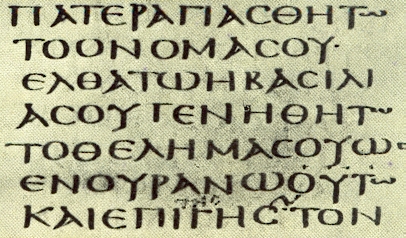


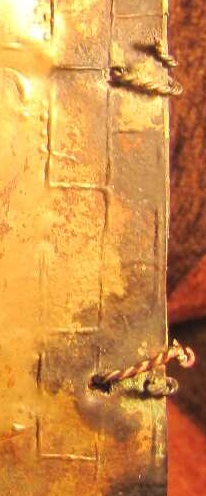

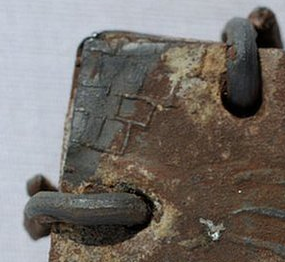
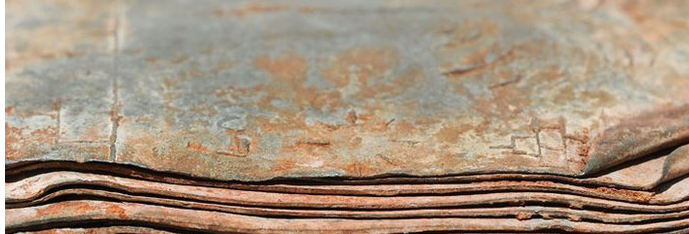
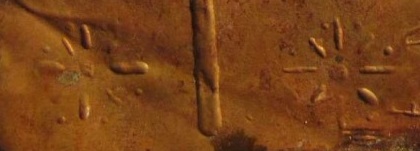
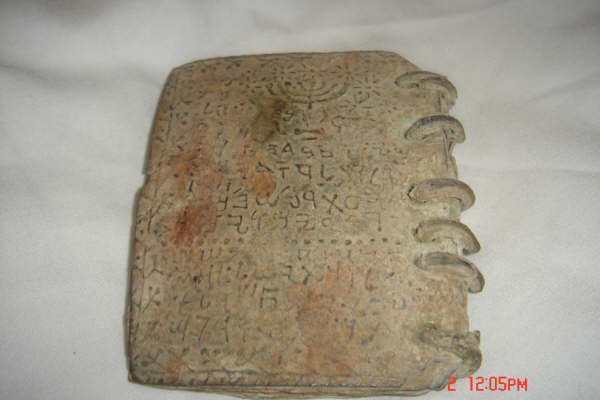

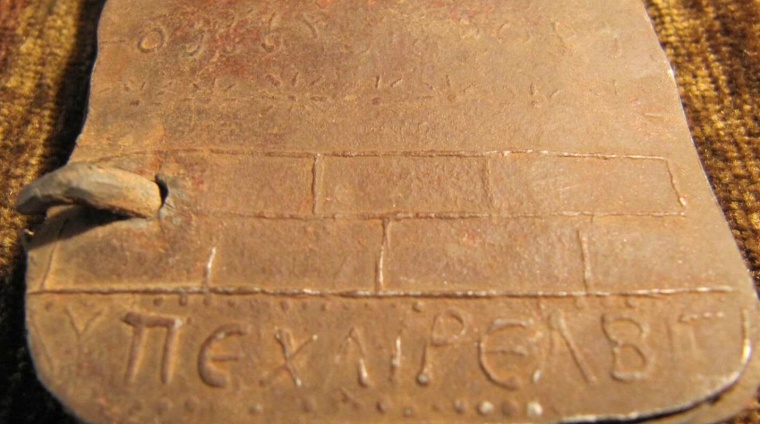
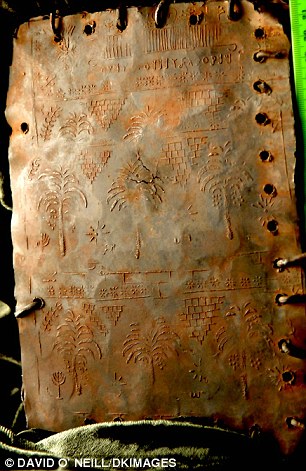
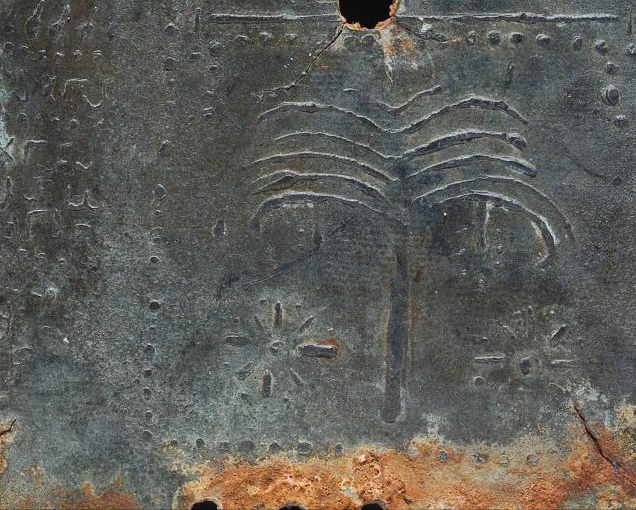
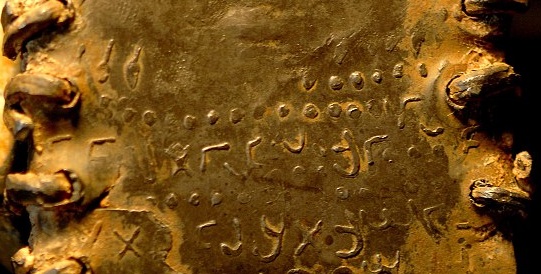
April 4th, 2011 at 6:34 am
Thanks for the roundup.
It’s probably just a result of my ignorance, but I’m surprised with all of the science and technology at our disposal that it’s still hard to conclusively authenticate these.
–Joel
April 4th, 2011 at 7:03 am
Hi Joel. Thanks for the comment. The problem is that no one is being given access to the codices. Ellington is claiming to have had tests run, but as far as I know he’s never said who conducted them, and for me his credibility is shot.
April 4th, 2011 at 6:38 am
Dan, I don’t think he is *planning* a book. According to one blog, the book ‘The Lead Codices’ was published a couple of years ago but is now out of print.
April 4th, 2011 at 7:06 am
Thanks for the comment, Ian. From what I’ve read, it seems he’s got a manuscript but is having trouble finding a publisher. If you have a link to a different version of the story I’d be interested in it.
April 4th, 2011 at 7:08 am
Hmmm…I will let you know. It was written on one of the (many) blog entries on this…!
April 4th, 2011 at 7:07 am
He could mean Robert Feather, who is a metallurgist who has been associated with the story.
April 4th, 2011 at 9:31 am
Dan, I think that is one of the most succinct descriptions of the matter I’ve read. Congratulations for putting out actual information on the information super-highway.
April 4th, 2011 at 9:42 am
Thanks for the kind words, Avram. Hope THE Ohio State University is treating you well. Too bad they didn’t make it to the final four. I actually had them going all the way. By the way, I hope you don’t mind, but I donated your subfusc to Yarnton Manor for use by anyone who needs it.
April 4th, 2011 at 3:53 pm
[…] to Jim Davila’s “Random Thoughts,” Thomas Verenna’s “New Roundup,” Daniel McClellan’s photo comparisons, and Ferrell Jenkins’ observations on the Kinderhook […]
April 4th, 2011 at 6:37 pm
SO AWESOME my science teach and i have been research this with me along with another freind and hopefully another soon. My study of Greek and ancient signs is emmense. THANKS FOR THE ARTICLE.
And i am wondering if i spelled immense right.
ANYWAY this is a great refrance for my team (I think i miss spelled referance as well)
It is very nice. I find all of these interesting. I wonder if you heard about one of the books: it is bound on all sides and they haven’t opened it yet. It is aawesome.
THANKS FOR THE ARTICLE, LOTS OF HELP> 🙂
April 4th, 2011 at 8:43 pm
I always found it very odd that there is no trace of what happened to the family of Jesus. I say return the artifacts to Jordan and let them do the research. I respect all religions, but I don’t think Isreal can be objective about artifacts giving information regarding Christ since they don’t believe he is the Son of God.
It would be nice if they could get the artifacts away from this “cave robber” and into the hands of true academics who want to study and preserve the books.
Since the books are written in ancient Hebrew, it would be wonderful if Isreal could work with Jordan on this find and aid in dating and researching the books.
Again, I respect all beliefs, but as a Christian it would be wonderful to finally see some true history on Christ family and life. What a wonderful find if it is true….let’s hope.
April 5th, 2011 at 5:32 am
As if the moslem in Jordan do believe that Jesus was the Son of God..!! They even deny crucifixion all together ! These are forged codices and so, the history about their discovery somewhere in Jordan is all but fake.They used it to make it more plausible by linking it to the Dead Sea Scrolls !This is not the first time forgers in Israel create fake artifact to sell and will not be the last…Using the name of Jesus is an always-win policy
April 5th, 2011 at 8:46 am
Interesting post. I’ve written an article about practical considerations for manufacturing the lead codices on the Primitive Method blog. You can read it at:
http://bit.ly/grsl8o
April 5th, 2011 at 8:53 am
Thanks for the comment. That’s an interesting discussion that confirms how I assumed the plates were produced.
April 5th, 2011 at 10:20 am
Well researched and well argued, Daniel. I agree with your conclusions.
April 5th, 2011 at 4:06 pm
[…] Daniel O. McClellan, Thoughts on the Jordan Lead Codices […]
April 6th, 2011 at 9:06 pm
[…] Very thorough, very intelligent, and very useful. I hope Dr. Jim includes it in the next Carnival. Tom Verenna also does a roundup. There’s still a lot of confusion and misinformation circulating about the Jordan lead codices, and I thought I would summarize some of the main issues and some considerations that should be taken into account. I’m not going to describe the background of the plates’ putative discovery and early life, but you can find much of that background, and commentary, at the following links: The Jewish Chronicle Online Daily Mail, 2 PaleoJudaica, 2, 3 Jerusa … Read More […]
April 6th, 2011 at 9:24 pm
[…] Thoughts on the Jordan Lead Codices […]
April 14th, 2011 at 3:36 am
[…] koperen codices, zodat de conclusie voor de hand ligt dat ook de loden codices vervalst zijn. Zie hier een overzicht van alle overeenkomsten door Daniel O. McClellan. De paleograaf Steve Caruso heeft […]
April 25th, 2011 at 12:01 pm
[…] standing up will to investigation. Rather than link to any individual story I want to link to this great resource here which is both a collection of relevant links and articles and a pretty solid analysis of the flaws […]
May 3rd, 2011 at 1:57 am
I am interested in more critical thinking about these codices, so thanks Daniel for your article.
To Elizabeth, there is information on what happened to the family of Jesus. It is not the traditional info put out by the church. First, Jesus was married to Mary Magdalene who was the most intelligent disciple, and they had two children. Sarah was the first-born and was with her mother when she fled to Egypt, then to Southern France. The town, Saint Marie de la Mer, has a celebration every year in Spring when the gypsies come, and carry the statue of Saint Sarah down to the ocean. See Saint Sarah at Wikipedia. If Sarah looks black, it is because Mary Magdalene was black! The descendants of Jesus and Mary Magdalene became the Knights Templar, the Cathars, and the royal houses of Europe, except for the Windsors of England who are from Hanover, Germany. Read books by Laurence Gardner, or Tony Bushby for more interesting info!
May 3rd, 2011 at 10:38 am
Alice…I assume you are being tongue in cheek, since there is no reputable evidence for any of this…
August 18th, 2011 at 5:53 pm
[…] https://danielomcclellan.wordpress.com/2011/04/03/thoughts-on-the-jordan-lead-codices/ Like this:LikeBe the first to like this post. Leave a Comment […]
August 23rd, 2011 at 9:22 am
[…] of the Thonemann codices and the others being promoted as genuine (see my discussion here and here). It also produces a rather unique codex that has little relationship to the other demonstrable […]
December 18th, 2011 at 9:57 am
[…] is not only evidence by the unquestionable relationships to modern texts and iconography (see here and here), but also by the fact that the scribe reverses the directions of the letters and even […]
December 21st, 2011 at 9:51 am
[…] copper codices that were shown conclusively to be modern forgeries by Peter Thonemann (see here and here, and here for good measure). They all came from the same forger. It should be pointed out that […]
August 13th, 2012 at 1:09 am
Jesus never existed, that is why these are forgeries.
September 19th, 2012 at 2:19 pm
[…] . ان توفر لديك الوقت اقرأ الموضوع في الرابط التالي : Thoughts on the Jordan Lead Codices المزيد من الصور الخاصة بالمجموعة : […]
June 11th, 2013 at 9:29 am
[…] links every scroll so far made public to the same workshop or craftsman (see here, here, here, or here, for […]
March 22nd, 2015 at 3:13 am
[…] Daniel O. McClellan has a post on his blog which is fairly technical. He also has a list of other articles on the […]